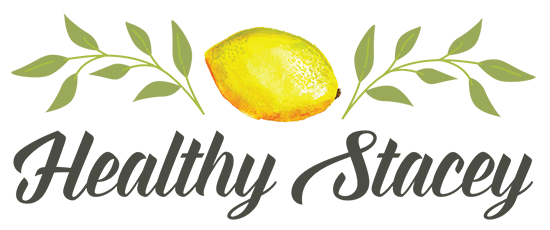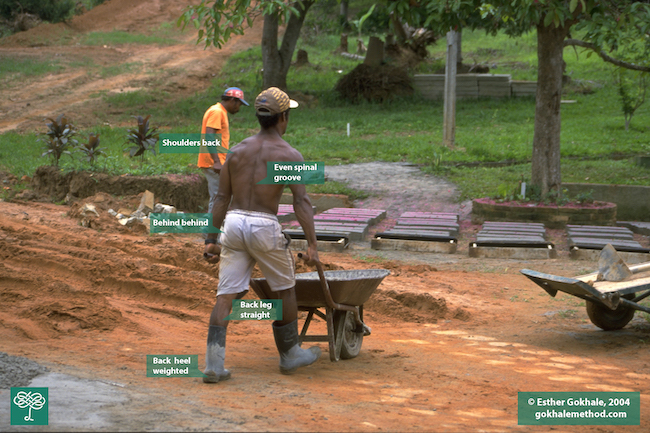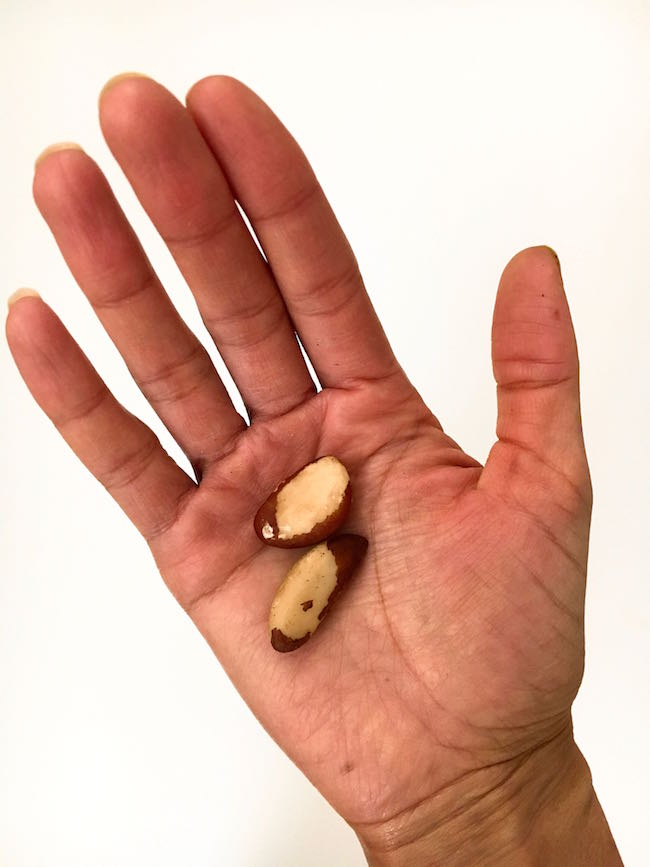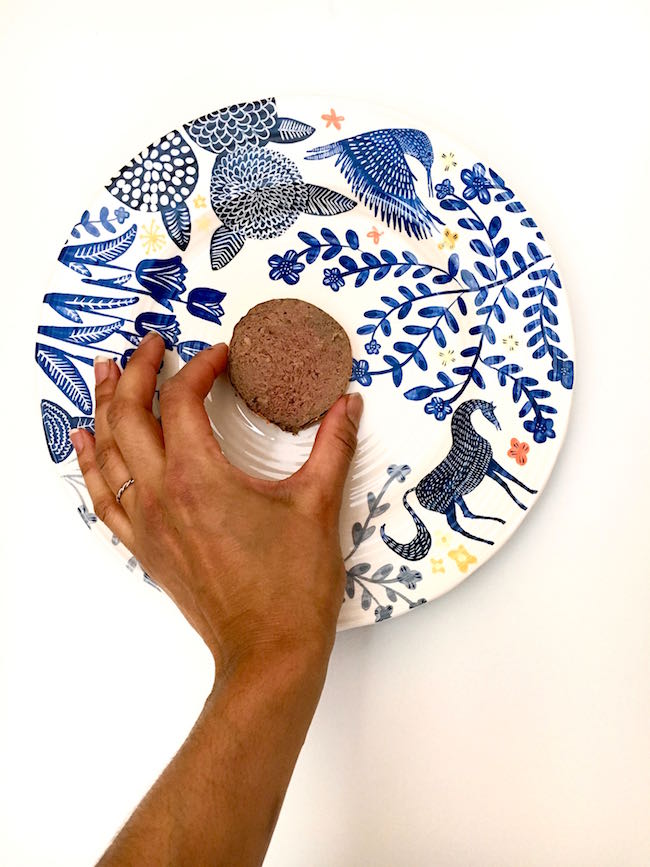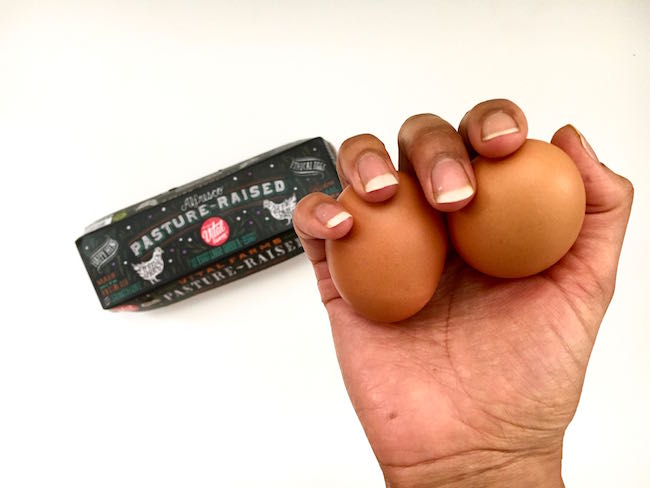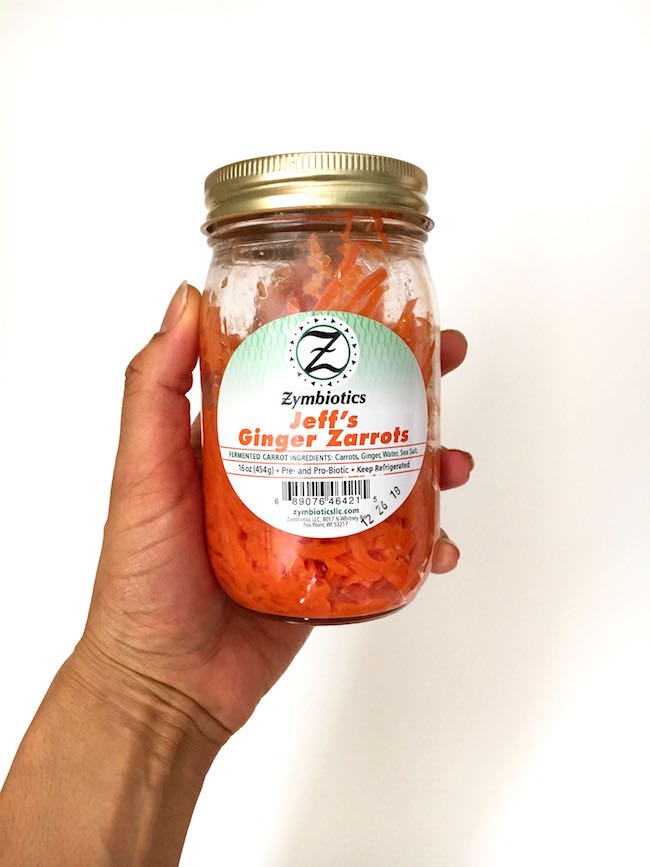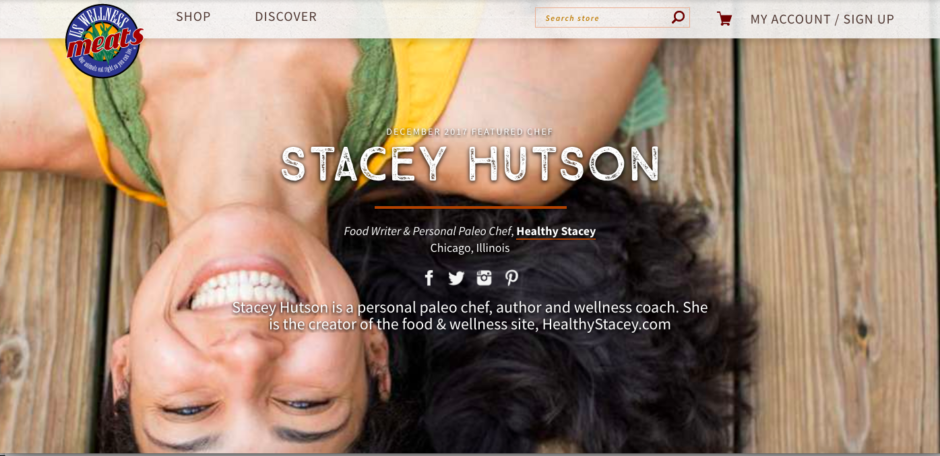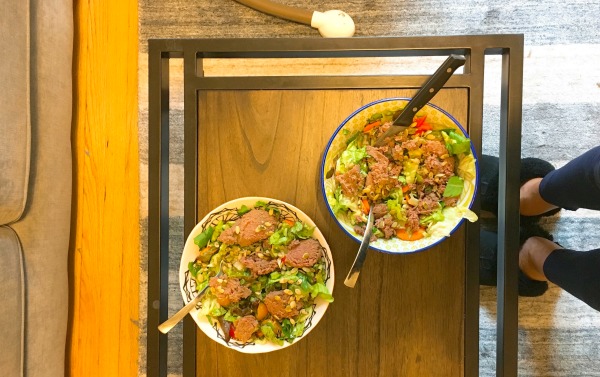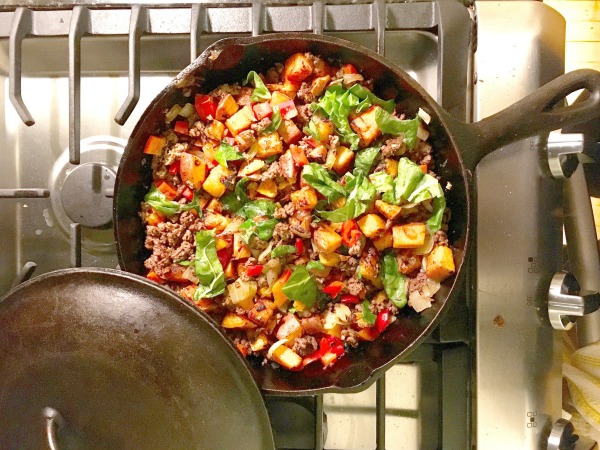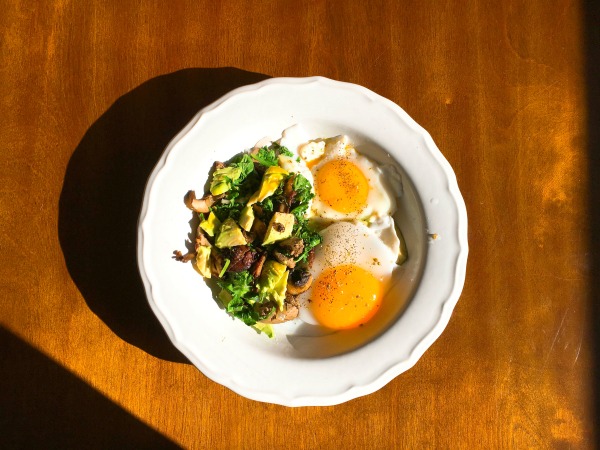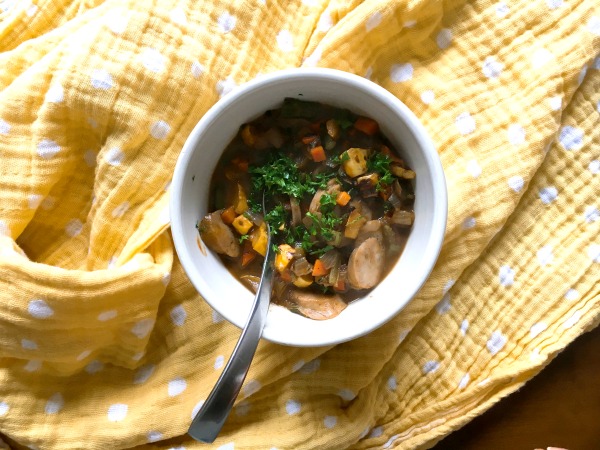She begins her day with a warm bath. Then, she brushes her teeth while strengthening her gluteus medius muscles (one leg, upper teeth; the other leg, lower teeth), followed by flossing, accomplished while balancing a bean bag on her head. Next, three rounds of sun salutations, followed by foam rolling to mobilize her thoracic spine and L5-S1 juncture. Finally, she takes a big glass of warm lemon water to her Gokhale chair (a chair with soft rubbery nubs on the back that helps to stretch the spine and a seat that gently slopes forward to encourage pelvic tilt while sitting) and makes calls to her team members in India and Germany.
Her name is Esther Gokhale. Her job is to improve the world’s posture.
Years of research in Brazil, India, and Portugal, along with her studies at the Aplomb® Institute in Paris led her to develop the Gokhale Method, a unique, systematic approach to help people find their bodies’ way back to pain-free living. She has taught at some of the world's most powerful corporations (Google, Facebook, IDEO), presented at conferences like TEDx, Weston Price Foundation Conference, and PrimalCon, has consulted trainers of the San Francisco 49ers along with several Stanford sports teams, and has an impressive client list that includes the likes of YouTube CEO Susan Wojcicki and Matt Drudge of the Drudge Report. In May 2013, The New York Times gave her the appropriate title of “The Posture Guru of Silicon Valley”.
I came across Esther as most people do — in pain and after exhausting all resources. Five years ago, I pulled out my back and found that I had a herniated disc. Since then, I’ve sought the help of an orthopedic surgeon, a physical therapist, three chiropractors, and three acupuncturists. Some helped, others didn’t. Whatever I did, inevitably, the pain would come back.
The most recent back-pull occurred the day after Thanksgiving. I was helping my husband move a couch and there it went. A small pang at first, and eventually it grew until every move I made twinged with pain. First, I bawled. Then, I took my usual action. I found a chiropractor and an acupuncturist, and started wearing my "Back Buddy" (a belted bean bag you heat in the microwave) around the house like a little old lady. But somewhere in the process, I realized that by doing so, I was practicing the definition of crazy — doing the same thing over and over again and expecting different results.
And then it hit me: Why is it that I am so quick to take my health into my own hands when it comes to nutrition and wellness, but when it comes to my back and muscles I constantly consult outside help?
Is it possible that there’s something I could proactively be doing to make all this pain go away?
According to Esther, the answer is yes. Esther is not here to massage your muscles, crack your bones, or stick needles into you (though she is certified as an acupuncturist). She doesn’t want you to have to depend on her or anybody on a regular basis to resolve your pain. Her goal is to empower you to take those changes into her own hands. How?
Posture.
Yes, the solution to back pain (and shoulder pain and leg pain) is posture. We, as a modern society, are not doing it right. We’re not sitting right, we’re not standing right, we’re not laying right, and we’re not walking right.
Who is? Ubong tribesmen in Borneo, fishermen in Portugal, brickmakers, carpenters, and mothers in West Africa. Countries that have not been affected by modern conveniences. She has spent years traveling and studying these people who practice perfect posture and who don’t have back pain — even though many of them perform what we would consider to be back-breaking work.
I reached out to Esther on a whim, after attending one of her free live video chat seminars. I had half-heartedly signed up, assuming it would be a sales-pushy presentation (If you sign up today, I'll knock 50% off my e-course!), but hoping to learn something from it. Instead, I found Esther, along with about 20 other attendees live in a group chat. There she was, answering individual peoples' questions about their aches and pains, doing everything she could to assist them on the spot.
This is a daily habit of hers. Helping people for free. Who is this woman? I took a long shot to see if she would be interested in being featured on Healthy Stacey. Not only did she say yes. Esther graciously gave me an hour of her time talking about everything from how to affect our children's posture to the unusual symptoms that result from bad posture (PMS, IBS, hemmheroids – no way!). She even answered a few questions that you, my readers, submitted to me prior to this interview (scroll to the end for those answers). If you really want to understand Esther’s methods, I highly recommend her book, “8 Steps to a Pain-Free Back.” But for a brief peek into Esther’s world, please join me in my interview with “The Posture Guru of Silicon Valley.”
———–
Me: Your book involves some pretty detailed descriptions of how we all can change our posture for the better. As somebody who was in a lot of pain, I impatiently wanted answers right away. For my readers who have not read your book, what is the best metaphor or visual you have for explaining to people how to position themselves on a daily basis?
Esther: Picture a ready position instead of parked position. Or picture the image of a Greek statue or a baby standing. It’s much more athletic and poised.
Me: If you could choose one thing that the majority of people are doing wrong when it comes to their posture, what would it be?
Esther: Swaying their backs because we’ve been encouraged to do that. Tucking their pelvis in is another.
Note: Esther explains her book that we’ve been misdirected when it comes to posture. Most physicians advise that an “S” curve is ideal posture. But Esther’s research shows that a “J” curve is best. It's what you'll see in the people of the aformentioned cultures, as well as in Leonardo Da Vinci drawings and Greek statues.This misinformation has led physians to encourage tucking of the pelvis and to create the bottom of the “S.”
Me: As a new mom, I’ve been following a more natural movement philosophy for my daughter, inspired by the teachings of RIE (don’t sit your kid up; wait until they sit up on their own; don’t help your kid walk; let them walk themselves, etc). What do you suggest we do with our babies and toddlers to help them develop correct posture from day one?
Esther: I think the notion of not supporting your child is not a possibility. You’re holding them and interacting with the material world whether you like it or not. In modern Western society, everybody is…
What’s more important is healthy support rather than unhealthy support. (There are) baby apparatuses that should not exist — the bouncing chairs, the walkers, etc. They put inappropriate pressure on the pelvis and tuck them in.
(Of course), there’s a balance to be struck. They have to go in a car and you want them to be safe. (That said), all the car seats are miserably designed. The emphasis needs to be on (marketers) understanding basic principles. Not just proliferating material stuff for commercial interest.
Monisha White (Esther's daughter, an intelligent, well-informed woman who works for The Gokhale Method happened to be in the room and stepped in when she heard this question): I went to the ancestral health symposium, and the natural movement philosophy you mentioned is very (in line with) the Gokhale Method. We need to inspire babies to move naturally. Esther always says, you don’t want them to wear shoes. Let their feet learn to develop naturally on their own.
Same thing with baby bouncers. If they put them in a bouncer, they don’t learn to use their stabilizers. People and parents will play a role. (It’s okay to) give a hand and help them build on their progression…You are going to be supporting them. The floors, the walls, they are all supports.
Me: What are common problems that people suffer from that they would not know are related to bad posture?
Esther: A lot of pelvic floor issues, urinary incontinence, prolapse, bad 'plumbing,' hemorrhoids, doing kegels to hold things up. Digestive issues – IBS, chronic constipation. PMS from having a tucked pelvis, insufficient volume, unnatural blood supply, and insufficient nerve supply for all the pubic organs. Depression. A 2017 study showed a link between depression and posture. Breathing challenges from not having adequate chest architecture.
Me: How do you feel about alternative treatments such as chiropractors? Cupping? Acupuncture? Physical therapy?
Esther: There’s lot of value in a lot of alternative and conventional methods. (But) I think they show up as being very middling in effectiveness for back pain. Let me show you something…
Esther proceeded to take me to a crowdsourcing website called healthoutcome.org. Here, different treatments are rated by people in their effectiveness.
If you look at how effective most treatments are, middling is what I would say. More people say treatment worsened than improved for back exercises. This correlates with studies. Gohkale Method is 4.4 out of 5. What the other approaches are missing is teaching them how to use their bodies. If people do the same things that caused the problems in the first place, why would it work that well? It doesn’t. People are trained with a mindset and a set of tools. They’re not trained to expand beyond. What we represent is a paradigm shift in many ways.
Reader Questions:
Reader: Walking while using a laptop, it’s a thing. That is how the author of Gone Girl spends her day: slow walk on treadmill with raised desk, writing. I did a version, but I got back pain from the slight leaning forward using the laptop. I guess I would ask (what she thinks) about these new ways to introduce activity to these typically sedentary tasks?
Esther: It’s important to take what’s good and not throw out the baby with the bathwater. What’s important to keep is mechanics. Movement is very important. Right now I’m doing Samba. (She literally was Samba dancing while we video chatted :)). That’s very possible with certain tasks. When you’re on the phone, you could be walking around. I think it’s important to take breaks regularly. We’ve designed posture pauses. Waking the body up and challenging it. I think it’s nice to have a variety.
There’s research showing that standing all day causes increased risk of hospitalization due to varicose veins, and fine motor skills and creative thought does not happen as well. I think it’s important to have variety and physical breaks.
I don’t agree with statements like the “Best position is the rest position.” Or "Sitting is evil." It’s thinking that everything is so bad that we have to keep running away from it. It’s all good if it’s done skillfully and in moderation. You don’t need much, but a good chair is nice. It’s important to sit some. It gives rest. It’s the best position for thinking. Lying down is an underrepresented, healthy position that should be threaded throughout day. You need a variety.
Reader: Do the posture bras really work?? Or what can she recommend?
Esther: In general, support can be helpful if they are used as reminders. It’s fine to use them. It’s limited in how helpful it can be if you’re going to be a passive participant. It can have some downside. The best is if you use it as a reminder and as a safety net. (I don’t have any experience with posture bras), but I'm currently writing a blog post about a back belt. I bought a bunch of them and tested them out.
Keep an eye out for that on Esther's blog.
Reader: How do you maintain healthy standing posture and prevent a sore back when your baby is half the size of you?
Esther: You learn to carry them on your back. African style with a piece of cloth. It’s some investment, but that is the most important thing I learned in child rearing. I used a cloth.
Reader: I sometimes think my wallet is what causing my back pains… literally my physical wallet and the hump of it I sit on daily… is there truth to this ??
Esther: (There) can be. It’s pressing on the point of departure from the sciatic nerve from the pelvis. If you don’t have that much musculature there, you could be pressing directly where the sciatic nerve exits the pelvis. That can cause sciatic pain because it’s introducing asymmetry. Having a large amount of stuff in your pockets can throw a wrench in what’s a finely tuned structure.
———-
Alrighty! That's all she wrote. What did you think? Did you learn anything new? For me, it's an entirely new way of looking at myself and the world around me. It's the first time that I've expanded my definition of "healthy" beyond food and exercise. I plan to write more on this topic — How should we sit? Stand? Lie? How can we work it into our daily routines? Comment below if you're interested in learning more, or if you have questions you'd like answered.
Much Love,
